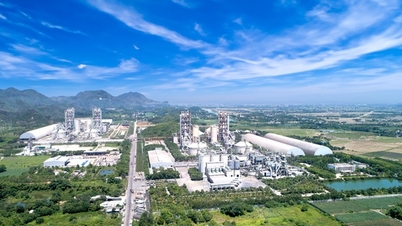Strong price fluctuations
At the workshop "Banking collateral - Current issues of concern" held on April 28, Lawyer Truong Thanh Duc, CEO of ANVI Law Firm, stated that to recognize digital assets as collateral, two basic factors must be ensured: first, the asset must have legal ownership; second, the asset must not be prohibited from being traded by law. Accordingly, any digital asset that fully meets the above two conditions can, in principle, be accepted as collateral.
However, from the banking perspective, there are still potential risks. Lawyer Truong Thanh Duc frankly pointed out that the law on mortgaging digital assets is currently incomplete, while the value of digital assets can fluctuate greatly, leading to risks for credit institutions if they accept them as collateral. According to Mr. Duc, even traditional assets such as real estate fluctuate strongly over time, while the value of virtual currency fluctuates many times more strongly, making it difficult to control. This causes the risk of capital loss and accompanying legal consequences for banks.
 |
| Lawyer Truong Thanh Duc |
Therefore, according to Lawyer Truong Thanh Duc, the recognition of digital assets or carbon credits as collateral in current banking activities needs to be further considered and wait for the full completion of the legal corridor to avoid potential risks.
Sharing the same view, Mr. Do Giang Nam, Member of the Board of Directors of the Asset Management Company of Credit Institutions (VAMC), said that Vietnam is building and perfecting the legal framework for digital assets. This will be a necessary condition for banks to consider digital assets as collateral. The sufficient condition is whether banks accept this type of asset or not, because banks must consider many factors, especially the ability to manage and handle digital assets and carbon credits in case of risks to borrowers.
 |
| Mr. Do Giang Nam, Member of VAMC Board of Directors |
Mr. Nam also stated that Vietnam’s goal is to fully establish a carbon credit trading market by 2028. This is necessary to ensure that banks have measures to handle debts related to carbon credits. According to the VAMC representative, banks will accept when this type of asset fully meets legal conditions as well as price stability.
Need careful preparation
Also discussing this issue, speaking on the sidelines of the Workshop with reporters from Banking Times, Dr. Le Thi Giang, Hanoi Law University, said that ensuring the safety of transactions related to digital assets and carbon credits requires a multi-dimensional approach. Along with building a legal framework related to these new types of assets, the parties involved in the security relationship, including the guarantor and the secured party, need to prepare carefully.
For example, if a bank wants to accept digital assets or carbon credits as collateral, it must develop specific processes and procedures, from asset assessment, valuation, to risk management, Ms. Giang said. The bank needs a team of experts to carry out these steps accurately and effectively.
 |
| Dr. Le Thi Giang, Hanoi Law University |
Unlike traditional assets such as land use rights, houses, cars, or motorbikes, the processing of related mortgage transactions is already very "smooth", digital assets and carbon credits require a completely different process, from determining management documents to the storage system.
In a deeper analysis, Dr. Le Thi Giang said that science and technology play a key role. Digital assets are stored in the digital environment and carbon credits also depend on the data management system. To ensure safety, advanced technology solutions are needed to protect data, prevent cyber attacks, and ensure transparency in asset storage and processing.
For example, with land use rights or housing, banks require a certificate, but with digital assets, it is necessary to clearly define which documents or systems will be used for management. Only when legal, business and technology are combined, will the use of digital assets and carbon credits as collateral become a reality.
Source: https://thoibaonganhang.vn/tai-san-so-tin-chi-carbon-la-tai-san-bao-dam-luu-y-tu-chuyen-gia-163494.html


![[Photo] Ho Chi Minh City residents "stay up all night" waiting for the April 30th celebration](https://vphoto.vietnam.vn/thumb/1200x675/vietnam/resource/IMAGE/2025/4/30/560e44ae9dad47669cbc4415766deccf)

![[Photo] General Secretary To Lam presents the title "Hero of Labor" to the Party Committee, Government and People of Ho Chi Minh City](https://vphoto.vietnam.vn/thumb/1200x675/vietnam/resource/IMAGE/2025/4/30/08a5b9005f644bf993ceafe46583c092)
![[Photo] Demonstration aircraft and helicopters flying the Party flag and the national flag took off from Bien Hoa airport](https://vphoto.vietnam.vn/thumb/1200x675/vietnam/resource/IMAGE/2025/4/30/b3b28c18f9a7424f9e2b87b0ad581d05)

















![[Photo] Ho Chi Minh City: People are willing to stay up all night to watch the parade](https://vphoto.vietnam.vn/thumb/1200x675/vietnam/resource/IMAGE/2025/4/29/cf71fdfd4d814022ac35377a7f34dfd1)





































































Comment (0)